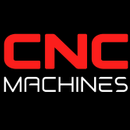What Happens to CNC Waste? A Deep Dive into Disposal, Recycling, and Sustainability in Modern Manufacturing

What Happens to CNC Waste? A Deep Dive into Disposal, Recycling, and Sustainability in Modern Manufacturing
In the world of CNC (Computer Numerical Control) machining, precision is king. These machines cut, mill, and drill raw materials into highly accurate parts for industries ranging from aerospace to automotive. But what happens to the byproducts — the chips, shavings, fluids, and scrap — generated during the process? This article explores what CNC waste is, how it’s managed, and why sustainable CNC waste disposal is a growing priority in modern manufacturing.
🔧 What Is CNC Waste?
CNC waste refers to the residual materials and byproducts produced during the machining process. The primary types include:
- Metal Chips and Shavings: These are the most visible waste products, resulting from cutting or milling operations.
- Scrap Parts: Rejected or defective parts that don’t meet specifications.
- Coolants and Cutting Fluids: Liquids used to cool and lubricate during machining.
- Plastic and Composite Waste: In industries using alternative materials, non-metal shavings are also common.
♻️ How Is CNC Waste Handled?
Proper CNC waste management is critical for safety, cost-efficiency, and environmental responsibility. Here’s how each type is typically handled:
1. Metal Chip Recycling
Metal shavings and chips — whether aluminum, steel, brass, or titanium — are highly recyclable. Shops often:
- Segregate chips by metal type
- Use centrifuges or briquetting systems to remove residual oils
- Sell scrap metal to certified recyclers for revenue recovery
This recycling loop not only reduces environmental impact but also recaptures value from what would otherwise be waste.
2. Coolant and Fluid Disposal
Coolants are essential but can’t be dumped down the drain due to environmental regulations. Shops manage them by:
- Filtering and reusing fluids multiple times
- Sending spent coolants to licensed disposal or treatment facilities
- Switching to eco-friendly or water-soluble options to reduce toxicity
3. Plastic and Composite Waste
Non-metal CNC waste is more difficult to recycle due to mixed resins or embedded fibers. These materials are often:
- Thermally processed in waste-to-energy facilities
- Repurposed for lower-grade applications
- Stored separately to avoid contaminating metal recyclables
4. Defective or Rejected Parts
Scrap parts may be:
- Re-machined if possible
- Recycled as raw material
- Logged and studied to improve future production accuracy
🌱 The Push Toward Sustainable CNC Waste Management
Manufacturers are increasingly adopting greener practices, driven by cost savings, regulations, and ESG (Environmental, Social, and Governance) goals. Key strategies include:
- Chip compactors and automated conveyors to improve collection
- Closed-loop coolant systems to reduce fluid waste
- Digital twin simulations to minimize trial-and-error machining
- Zero-waste goals in ISO 14001-certified facilities
These initiatives help manufacturers not only meet compliance but also enhance their brand image and long-term profitability.
🏭 What Happens to CNC Waste After It Leaves the Shop?
Once waste is collected:
- Metal chips go to smelters and re-enter the manufacturing cycle as raw materials.
- Coolants are chemically treated to separate water from oils before disposal or recycling.
- Plastics may be downcycled into lower-grade products or used as fuel in incineration plants.
End-to-end CNC waste management plays a crucial role in creating a circular economy where today’s scrap becomes tomorrow’s supply.
🔍 Final Thoughts: Waste Isn’t Waste Until It’s Wasted
In the CNC machining world, waste is more than just a byproduct — it's an opportunity. Whether through recycling metal chips, reclaiming fluids, or reducing scrap rates through smart machining, shops can save money and reduce their environmental footprint. As more manufacturers embrace automation, AI, and sustainability, the future of CNC waste looks cleaner, smarter, and greener.


